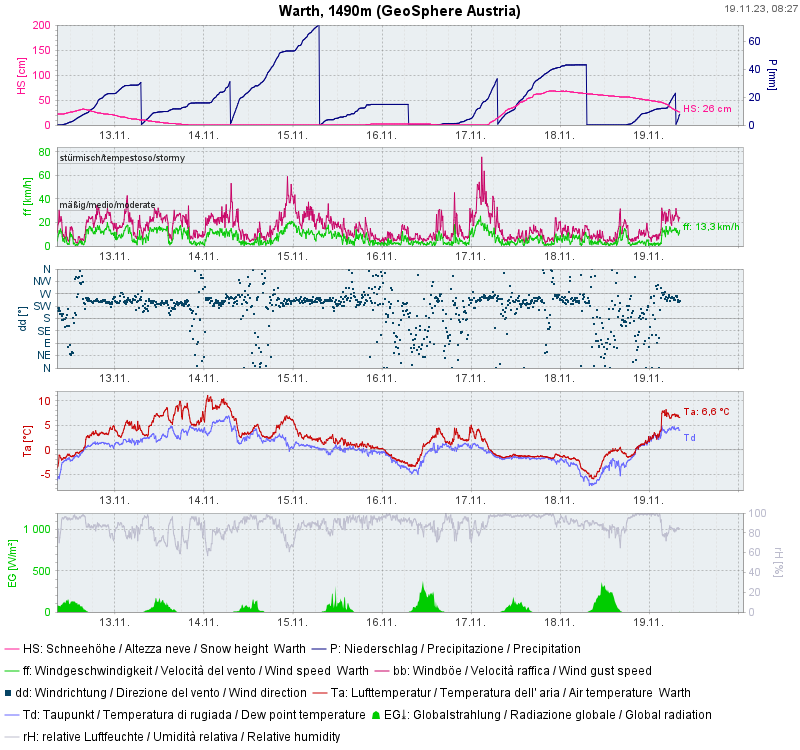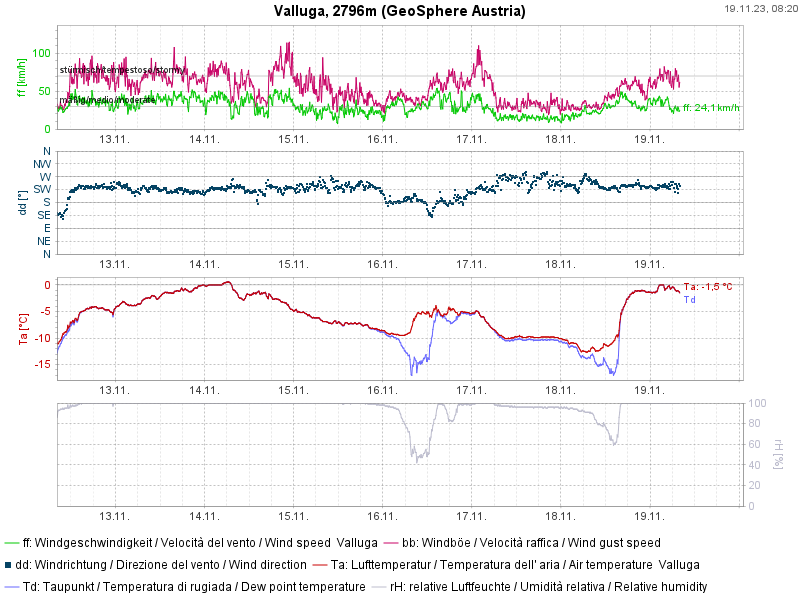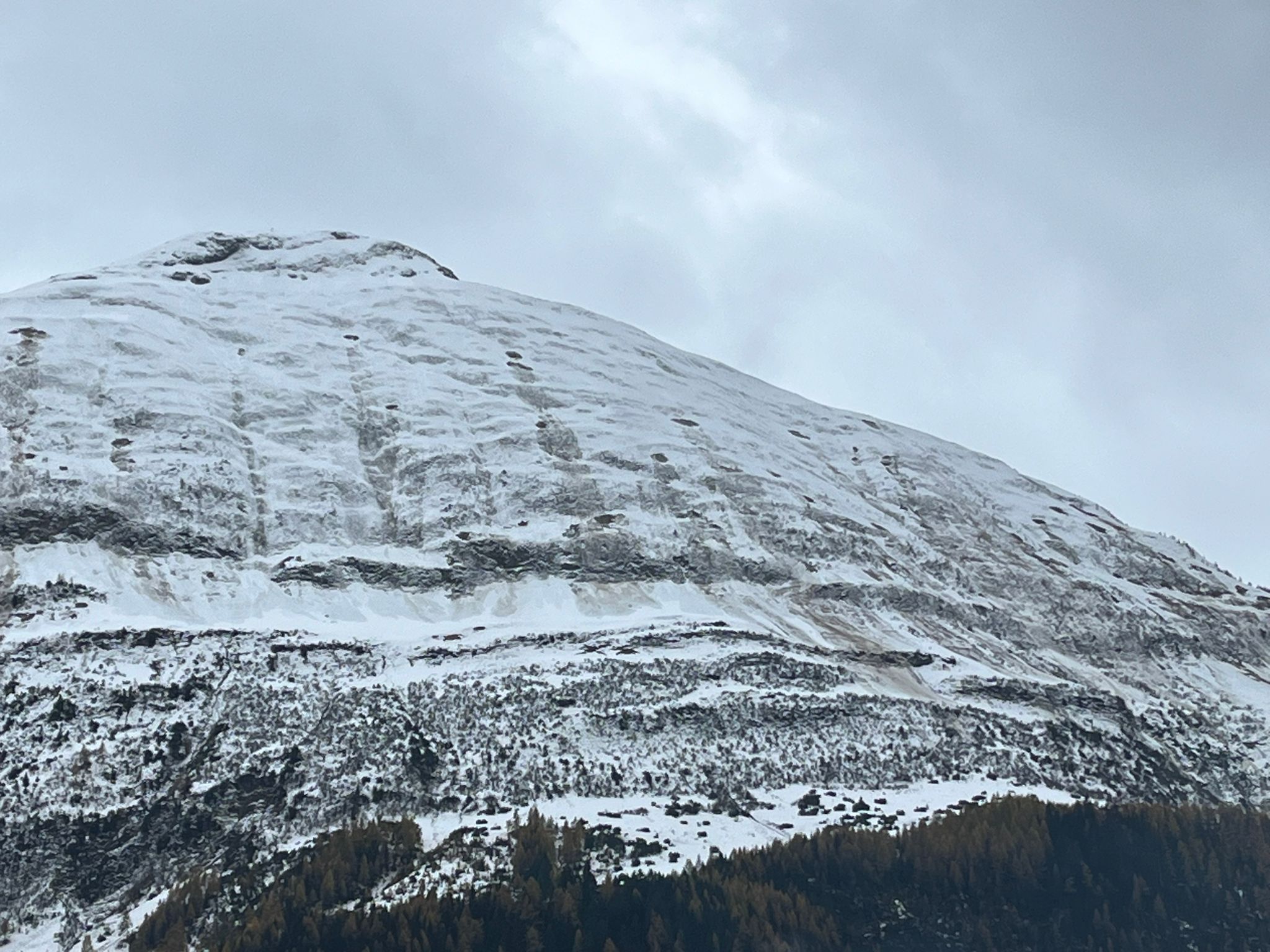Rainfall is weakening the snowpack. Where there is a lot of snow on the ground, increasingly frequent glide-snow activity can be expected. As a warm front moves in, the snowfall level will swiftly ascend starting in the evening of 18.11, making freshly and recently generated snowdrift accumulations highly prone to triggering.
Current Situation
Over the last 24 hours there has been heavy precipitation in the northern and western regions. As a warm front moves in, the snowfall level will rapidly ascend starting in the evening of 18.11. Currently it is raining up to about 2400 m. In addition, strong-to-stormy winds are blowing in the mountains. As a consequence of warmth, wetness and wind, the snowpack is being negatively impacted in numerous ways.


Glide-snow avalanches on steep, grass-covered slopes
Particularly in the western and northern regions of North Tirol where there has recently been major snowfall which is now reaching its culmination, rainfall is weakening the snowpack. We anticipate increasingly frequent glide-snow activity on steep grassy slopes..
Fresh, trigger-sensitive snowdrift accumulations at heightened altitudes
Snowfall, winds and a marked rise in temperature are currently reinforcing the proneness to triggering of fresh and recently generated snowdrift accumulations at elevated altitudes. The higher temperatures are bonding near-surface layers,which then form a well-developed slab, often deposited atop weak layers. The frequency and magnitude of such avalanche prone locations increases with ascending altitude. Special caution is urged above about 2400 m in very steep terrain on NW-N-SE facing slopes.
Wet loose-snow avalanches
Furthermore, predominantly small-sized loose-snow avalanches are currently being increasingly observed in rocky terrain.
The next blog will be published whenever the snow and avalanche situation changes significantly.
